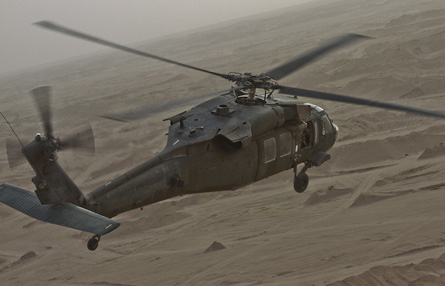Downselection by the US Army for the engineering, manufacture and design phase of its future Common Infrared Countermeasures (CIRCM) programme is expected to be made in July, and could include low rate initial production (LRIP) of the aircraft protection system.
Following the completion of a 24-month technology development phase – and the subsequent follow-on 12-month bridge effort – in March 2015, competing primes BAE Systems and Northrop Grumman are awaiting the results of bids submitted in November for the EMD phase, for which the downselection to one vendor is now being prepared.
“We completed that portion [the technology definition phase] and feedback from the government was positive,” Chris Ager, director of infrared countermeasures at BAE, tells Flightglobal. “The plan is for a contract award on 20 July.
“The next phase of the EMD consists of a base programme that is essentially maturing the hardware … for reliability, as well as delivering some sets of EMD hardware.”
This 26-month phase will cover the delivery of 21 CIRCM systems, and includes an option to begin LRIP, as well as options to include US-Navy specific systems.
“They could exercise these options at any time during that EMD programme,” Ager says.
Initial work centres on the Sikorsky UH-60 Black Hawk, which will be followed by the Boeing AH-64 Apache. At present, 10 aircraft are touted to receive the CIRCM system. LRIP could start in 2017 and the first unit could be fielded by 2019, Ager says.

US Army
Defence export features were also introduced in the RfP so that CIRCM could be exported, although the release of funding for this remains unconfirmed.
BAE is the manufacturer of the legacy Advanced Threat Infrared Countermeasures (ATIRCM) system that CIRCM will replace, which Ager says was effective, but needed to be made smaller and lighter.
CIRCM is a laser-based aircraft protection suite to counter threats to rotary and light fixed-wing aircraft such as man-portable air-defence missiles, and will be integrated with the Common Missile Warning System (CMWS) also manufactured by BAE, which Ager says increases the “chance of system success” if the BAE CIRCM proposal is chosen.
Ager notes that maturity and reliability of CIRCM are part of the requirement, and says that “we have a good track record of these”.
“We are now waiting on what the decision is going to be,” he adds.
Source: FlightGlobal.com



















